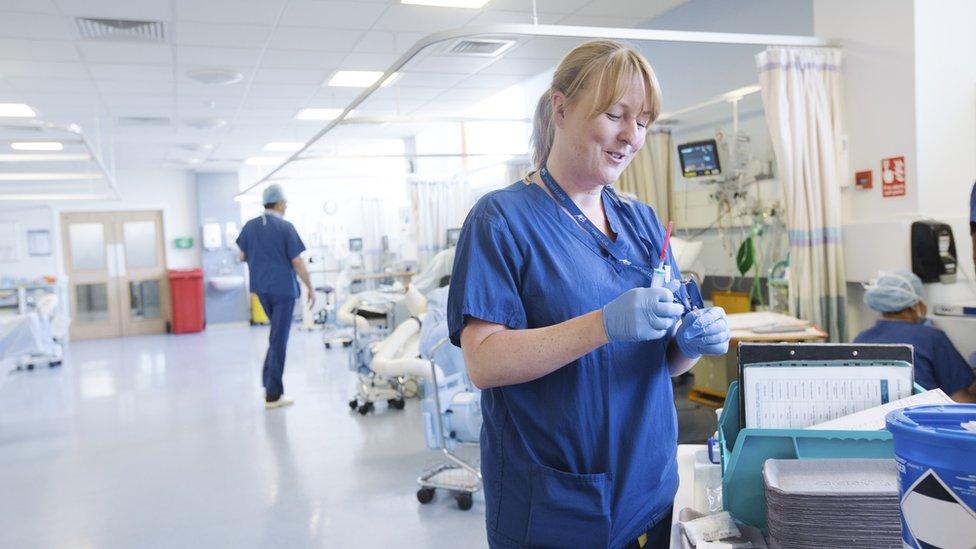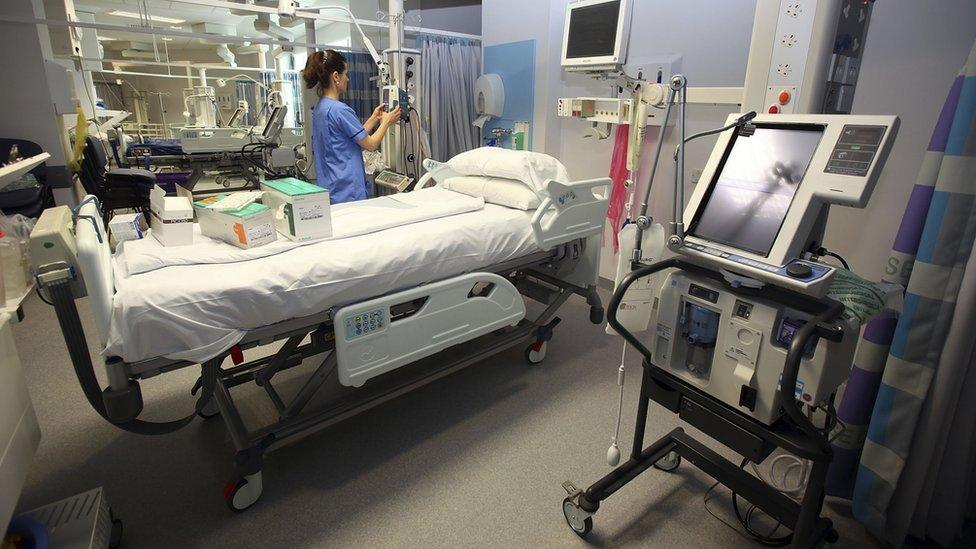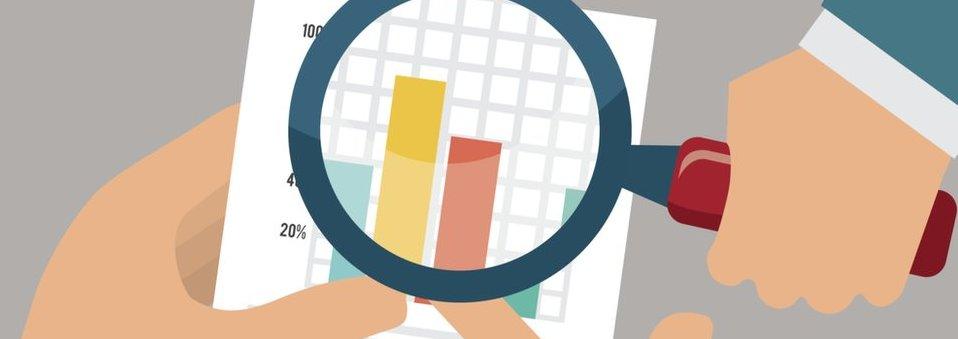NHS: Surging patient numbers - what's happening in A&E?
- Published

The numbers arriving in accident and emergency units have surged.
Calls to the NHS 111 helpline have been a lot higher than the same time last year. Yet the weather has not been unusual for winter and norovirus and flu numbers are nothing out of the ordinary.
So what's going on? Nobody, it seems, has a very clear answer.
The weekly NHS England figures (ending 24 January) reveal an 8% year-on-year increase in attendances at major A&E units.
Calls to 111 were 20% higher than the same week last year.
A Welsh government spokesman said there had been a sharp rise in the number of people seeking treatment in emergency departments.
It seems to have been a similar picture in Scotland, though with some improvement on last winter according to its government.
This week the pressures don't seem to have eased, though we don't yet have the detailed data. There were reports of an "extremely serious situation" at one hospital which had to cancel all routine operations and appointments, apart from cancer surgery, for two days.
GPs in north London were told that two local hospitals were experiencing "very high pressure on beds" which created a "significant challenge to safe operating". Practices were asked to consider using alternative options for their patients including walk-in centres.

It is thought that many people see A&E as a well-regarded "brand"
It adds up to a service under even greater pressure than most had expected. NHS England noted there had been bad weather last week, which might have accounted for some of the increase in patient numbers.
But while paying tribute to the "remarkable" job done by staff in providing high quality services, NHS chiefs acknowledged the "very real" pressures which were not expected to ease in the run-up to spring.
Elderly patients
Heads of emergency departments point out there has not been a sudden new spike in numbers of people coming through their doors. They argue that there has been a steadily increasing trend going back a couple of years.
Familiar factors are quoted, including numbers of frail, elderly patients with multiple conditions needing an increasing range of care and treatment.
One specialist in geriatric medicine told me more older patients were coming into A&E because of problems with care in their home. This could be because social care was lacking in some way, or because a spouse had become unable to cope.
But the surge in hospital attendances was by no means dominated by the over-65s.
One theory being put forward is that A&E is a well-regarded "brand" amongst the public and is trusted to deliver high quality care even with a wait.
This could tie in with people feeling that their local GP practice is overburdened and a perception that appointments are not easy to get. In a 24/7 culture people increasingly expect instant service, including from the NHS.
Winters are always busy in the NHS and there are always difficult weeks. This one is unusual because of the scale of the increase in demand.
If one thing is clear, it is that people are not getting the message to avoid A&E and go elsewhere unless it's a genuine emergency.

The NHS in winter: Want to know more?

Special report page:, external For the latest news, analysis and video
Winter across the UK: A guide to how the NHS is coping
Video: Why hospitals are under so much pressure
Video: How a hospital can grind to a halt
